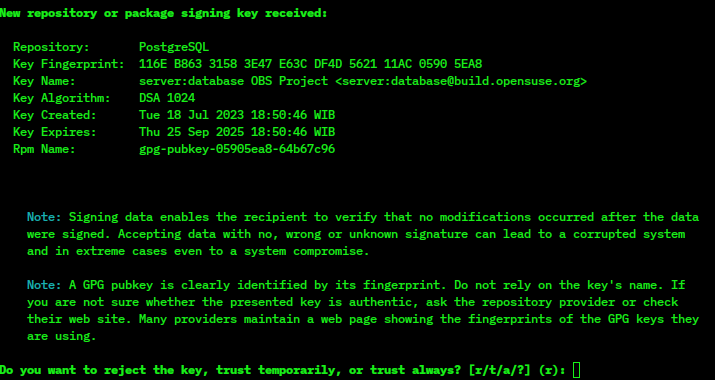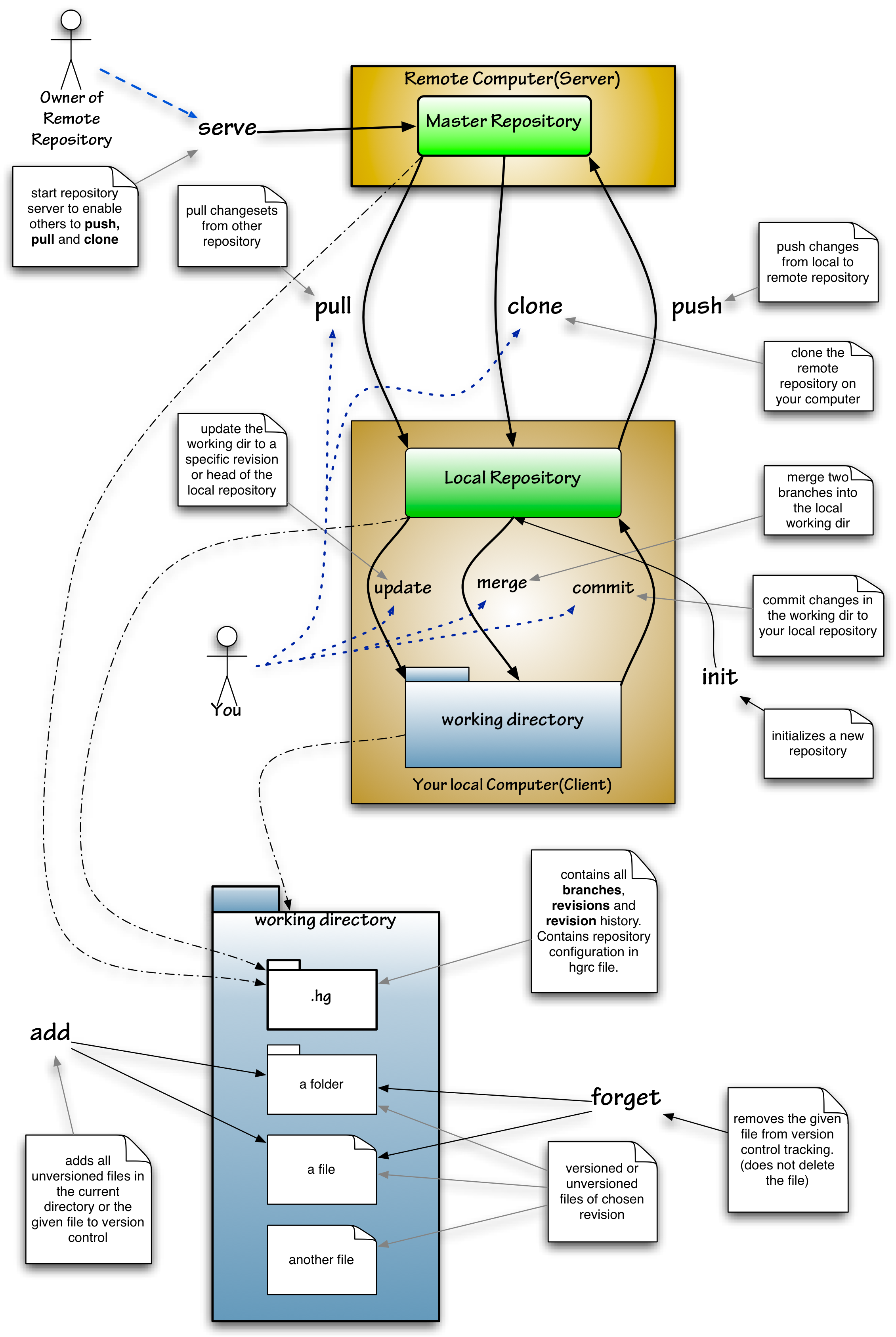|
Commit (revision Control)
In version control systems, a commit is an operation which sends the latest changes of the source code to the repository, making these changes part of the head revision of the repository. Unlike commits in data management, commits in version control systems are kept in the repository indefinitely. Thus, when other users do an update or a checkout from the repository, they will receive the latest committed version, unless they specify that they wish to retrieve a previous version of the source code in the repository. Version control systems allow rolling back to previous versions easily. In this context, a commit within a version control system is protected as it is easily rolled back, even after the commit has been applied. Usage Git To commit a change in git on the command line, assuming git is installed, the following command is run: git commit -m 'commit message' This is also assuming that the files within the current directory have been staged as such: git add . ... [...More Info...] [...Related Items...] OR: [Wikipedia] [Google] [Baidu] |
|
|
Version Control
Version control (also known as revision control, source control, and source code management) is the software engineering practice of controlling, organizing, and tracking different versions in history of computer files; primarily source code text files, but generally any type of file. Version control is a component of software configuration management. A ''version control system'' is a software tool that automates version control. Alternatively, version control is embedded as a feature of some systems such as word processors, spreadsheets, collaborative groupware, web docs, and content management systems, e.g., Help:Page history, Wikipedia's page history. Version control includes viewing old versions and enables Reversion (software development), reverting a file to a previous version. Overview As teams develop software, it is common to Software deployment, deploy multiple versions of the same software, and for different developers to work on one or more different versions ... [...More Info...] [...Related Items...] OR: [Wikipedia] [Google] [Baidu] |
|
|
Repository (version Control)
In version control systems, a repository is a data structure that stores metadata for a set of files or directory structure. Depending on whether the version control system in use is distributed, like Git or Mercurial, or centralized, like Subversion, CVS, or Perforce, the whole set of information in the repository may be duplicated on every user's system or may be maintained on a single server. Some of the metadata that a repository contains includes, among other things, a historical record of changes in the repository, a set of commit objects, and a set of references to commit objects, called ''heads''. The main purpose of a repository is to store a set of files, as well as the history of changes made to those files. Exactly how each version control system handles storing those changes, however, differs greatly. For instance, Subversion in the past relied on a database instance but has since moved to storing its changes directly on the filesystem. These differences in stor ... [...More Info...] [...Related Items...] OR: [Wikipedia] [Google] [Baidu] |
|
 |
Commit (data Management)
In computer science and data management, a commit is a behavior that marks the end of a transaction and provides Atomicity (database systems), Atomicity, Consistency (database systems), Consistency, Isolation (database systems), Isolation, and Durability (database systems), Durability (ACID) in transactions. The submission records are stored in the submission Log file, log for recovery and consistency in case of failure. In terms of transactions, the opposite of committing is giving up tentative changes to the transaction, which is rolled back. Due to the rise of distributed computing and the need to ensure data consistency across multiple systems, commit protocols have been evolving since their emergence in the 1970s. The main developments include the Two-phase commit protocol, Two-Phase Commit (2PC) first proposed by Jim Gray (computer scientist), Jim Gray, which is the fundamental core of distributed transaction management. Subsequently, the Three-phase commit protocol, Three- ... [...More Info...] [...Related Items...] OR: [Wikipedia] [Google] [Baidu] |
 |
Command Line
A command-line interface (CLI) is a means of interacting with software via command (computing), commands each formatted as a line of text. Command-line interfaces emerged in the mid-1960s, on computer terminals, as an interactive and more user-friendly alternative to the non-interactive mode available with punched cards. For a long time, a CLI was the most common interface for software, but today a graphical user interface (GUI) is more common. Nonetheless, many programs such as operating system and software development utility software, utilities still provide CLI. A CLI enables automation, automating computer program, programs since commands can be stored in a scripting language, script computer file, file that can be used repeatedly. A script allows its contained commands to be executed as group; as a program; as a command. A CLI is made possible by command-line interpreters or command-line processors, which are programs that execute input commands. Alternatives to a CLI ... [...More Info...] [...Related Items...] OR: [Wikipedia] [Google] [Baidu] |
 |
Software Repository
A software repository, or repo for short, is a storage location for Package format, software packages. Often a table of contents is also stored, along with metadata. A software repository is typically managed by source or version control, or repository managers. Package managers allow automatically installing and updating repositories, sometimes called "packages". Overview Many software publishers and other organizations maintain servers on the Internet for this purpose, either free of charge or for a subscription fee. Repositories may be solely for particular programs, such as CPAN for the Perl programming language, or for an entire operating system. Operators of such repositories typically provide a package management system, tools intended to search for, install and otherwise manipulate software packages from the repositories. For example, many Linux distributions use APT (software), Advanced Packaging Tool (APT), commonly found in Debian based distributions, or Yellowdog Up ... [...More Info...] [...Related Items...] OR: [Wikipedia] [Google] [Baidu] |
 |
Mercurial
Mercurial is a distributed revision control tool for software developers. It is supported on Microsoft Windows, Linux, and other Unix-like systems, such as FreeBSD and macOS. Mercurial's major design goals include high performance and scalability, decentralization, fully distributed collaborative development, robust handling of both plain text and binary files, and advanced branching and merging capabilities, while remaining conceptually simple. It includes an integrated web-interface. Mercurial has also taken steps to ease the transition for users of other version control systems, particularly Subversion. Mercurial is primarily a command-line driven program, but graphical user interface extensions are available, e.g. TortoiseHg, and several IDEs offer support for version control with Mercurial. All of Mercurial's operations are invoked as arguments to its driver program hg (a reference to Hg – the chemical symbol of the element mercury). Olivia Mackall originated Mercu ... [...More Info...] [...Related Items...] OR: [Wikipedia] [Google] [Baidu] |
 |
Commit (data Management)
In computer science and data management, a commit is a behavior that marks the end of a transaction and provides Atomicity (database systems), Atomicity, Consistency (database systems), Consistency, Isolation (database systems), Isolation, and Durability (database systems), Durability (ACID) in transactions. The submission records are stored in the submission Log file, log for recovery and consistency in case of failure. In terms of transactions, the opposite of committing is giving up tentative changes to the transaction, which is rolled back. Due to the rise of distributed computing and the need to ensure data consistency across multiple systems, commit protocols have been evolving since their emergence in the 1970s. The main developments include the Two-phase commit protocol, Two-Phase Commit (2PC) first proposed by Jim Gray (computer scientist), Jim Gray, which is the fundamental core of distributed transaction management. Subsequently, the Three-phase commit protocol, Three- ... [...More Info...] [...Related Items...] OR: [Wikipedia] [Google] [Baidu] |